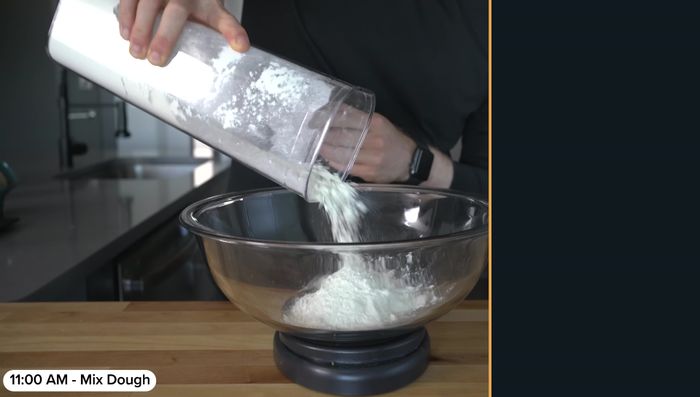Paratha, a beloved flatbread hailing from the Indian subcontinent, is a culinary delight celebrated for its flaky layers and versatile nature. From humble street food stalls to elegant dining tables, paratha's satisfying texture and adaptable flavor profile make it a staple across various cultures. Whether enjoyed plain with a dollop of yogurt or stuffed with spiced potatoes, cheese, or even minced meat, this unleavened bread offers an endlessly customizable culinary experience. Its versatility extends beyond its fillings, too—it pairs beautifully with curries, chutneys, and pickles, enhancing any meal.
The seemingly simple process of making paratha belies its delicious complexity, a testament to the artistry of its preparation. Achieving that signature flaky texture requires a specific technique and understanding of the dough. Ready to embark on a culinary journey and create perfectly layered parathas? Let's dive into the step-by-step process outlined below.
Tools Needed
- Bowl
- Scale
- Sheet tray
- Rolling pin
- Pan
Ingredients
- All-purpose flour: 500 grams
- Salt: 10 grams
- Vegetable oil: 30 grams
- Water: 300 grams
- Ghee
Step-by-Step Instructions
Step 1. Prepare and Rest the Dough
- Place a bowl over a scale and add 500 grams of all-purpose flour, 10 grams of salt, and 30 grams of vegetable oil. Coarsely mix together with your hands.
- Add 300 grams of room temperature water and mix the dough until no dry flour remains. Cover and let it rest for 15 minutes.
- stretch a piece of dough until it becomes translucent.
- Divide the dough into equal pieces (8-10, 80-100 grams each). Place them on a sheet tray and let them rest for 15 minutes.




Step 2. Fold the Dough
- Choose a folding method (triangle, fold and coil, or pinch and roll). Roll out a portion of dough thinly, spread ghee, and optionally sprinkle flour.
- **Triangle Fold:** Roll into a circle, brush with ghee and flour, fold in half, spread more ghee, and fold again into a triangle.
- **Fold and Coil:** Roll thinly, spread ghee, fold in half, then create accordion folds. Roll into a coil, pinching the end.
- **Pinch and Roll:** Roll thinly, spread ghee, pinch one end and roll into a log.




- Let the folded dough rest for at least 15 minutes.

Step 3. Roll and Cook the Paratha
- Roll out the dough into an 8-9 inch circle.
- **Cooking Method 1 (Fry Immediately):** Heat a pan with oil/ghee. Fry the paratha on one side until golden brown, pressing down and circling. Flip and repeat until cooked through.
- **Cooking Method 2 (Dry Cook and Freeze):** Heat a pan (no oil). Dry cook the paratha on both sides until lightly browned and no wet spots remain. Cool on a rack, freeze, and fry later.



Step 4. Serve
- Serve and enjoy!

Read more: Easy Indian Bread Pudding Recipe: A Simple Dessert
Tips
- Traditionally, maida flour is used, but all-purpose flour works well.
- The gluten window test ensures proper dough hydration and gluten development.
- The fold and coil method yields lighter and flakier layers.
- Scrunching the cooked paratha releases steam and enhances flakiness.
Nutrition
- N/A
FAQs
1. Why is my paratha dough sticky?
Your dough might be too wet. Add a little more flour, a tablespoon at a time, until it becomes pliable but not sticky.
2. How do I get those perfectly flaky layers?
The key is gentle rolling and layering. Don't overwork the dough, and use a light hand when layering and rolling to prevent tearing.
3. Can I use whole wheat flour instead of all-purpose flour?
Yes! Whole wheat flour will result in a slightly denser but still delicious paratha. You might need to add a little more water to the dough.
With a little practice, you'll be mastering the art of flaky paratha in no time. Enjoy the satisfying crunch and delicious flavor of your homemade parathas, perfect for any meal or occasion. Now go forth and impress your family and friends with this versatile and flavorful flatbread!
